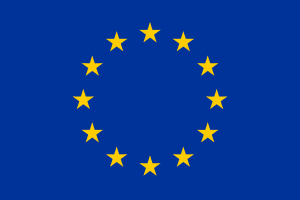10 results found for: “EU_Politics”.
Request time (Page generated in 0.4122 seconds.)Politics of the European Union
Last Update: 2024-04-24T16:38:40Z Word Count : 3571Animal Politics EU
Last Update: 2023-12-28T04:41:12Z Word Count : 470Member state of the European Union
Last Update: 2024-04-12T06:40:01Z Word Count : 5019European Union
Last Update: 2024-04-25T12:24:28Z Word Count : 23212Armenia–European Union relations
Last Update: 2024-04-23T17:21:10Z Word Count : 8813Pro-Europeanism
Last Update: 2024-04-21T09:32:43Z Word Count : 2693Euroscepticism
Last Update: 2024-04-21T12:21:06Z Word Count : 18360Accession of Turkey to the European Union
Last Update: 2024-04-21T17:48:20Z Word Count : 14081Libertas.eu
Last Update: 2024-02-13T09:59:15Z Word Count : 4791
Main result
Politics of the European Union
 The political structure of the European Union (EU) is similar to a confederation, where many policy areas are federalised into common institutions capable of making law; the competences to control foreign policy, defence policy, or the majority of direct taxation policies are mostly reserved for the twenty-seven state governments (the Union does limit the level of variation allowed for VAT). These areas are primarily under the control of the EU's member states although a certain amount of structured co-operation and coordination takes place in these areas. For the EU to take substantial actions in these areas, all Member States must give their consent. Union laws that override State laws are more numerous than in historical confederations; however, the EU is legally restricted from making law outside its remit or where it is no more appropriate to do so at a state or local level (subsidiarity) when acting outside its exclusive competences. The principle of subsidiarity does not apply to areas of exclusive competence.
The common institutions mix the intergovernmental and supranational (similar to federal) aspects of the EU. The EU treaties declare the Union to be based on representative democracy, and direct elections take place in the European Parliament. The Parliament, together with the Council, form the legislative arm of the EU. The council is composed of state governments, thus representing the intergovernmental nature of the EU. Laws are proposed by the European Commission which is appointed by and accountable to the Parliament and Council although it has very few executive powers.
Although direct elections take place every five years, there are no cohesive political parties in the national sense. Instead, there are alliances of ideologically associated parties who sit and vote together in Parliament. The two largest parties are the European People's Party (centre-right, mostly Christian Democrat) and the Party of European Socialists (centre-left, mostly Social Democrat) with the former forming the largest group in Parliament since 1999. As well as there being left and right dividing lines in European politics, there are also divides between those for and against European integration (Pro-Europeanism and Euroscepticism) which shapes the continually changing nature of the EU which adopts successive reforming treaties. The latter was a significant political force in the United Kingdom in the decades and years before leaving the Union, and some member states are less integrated than others due to legal opt-outs.
The political structure of the European Union (EU) is similar to a confederation, where many policy areas are federalised into common institutions capable of making law; the competences to control foreign policy, defence policy, or the majority of direct taxation policies are mostly reserved for the twenty-seven state governments (the Union does limit the level of variation allowed for VAT). These areas are primarily under the control of the EU's member states although a certain amount of structured co-operation and coordination takes place in these areas. For the EU to take substantial actions in these areas, all Member States must give their consent. Union laws that override State laws are more numerous than in historical confederations; however, the EU is legally restricted from making law outside its remit or where it is no more appropriate to do so at a state or local level (subsidiarity) when acting outside its exclusive competences. The principle of subsidiarity does not apply to areas of exclusive competence.
The common institutions mix the intergovernmental and supranational (similar to federal) aspects of the EU. The EU treaties declare the Union to be based on representative democracy, and direct elections take place in the European Parliament. The Parliament, together with the Council, form the legislative arm of the EU. The council is composed of state governments, thus representing the intergovernmental nature of the EU. Laws are proposed by the European Commission which is appointed by and accountable to the Parliament and Council although it has very few executive powers.
Although direct elections take place every five years, there are no cohesive political parties in the national sense. Instead, there are alliances of ideologically associated parties who sit and vote together in Parliament. The two largest parties are the European People's Party (centre-right, mostly Christian Democrat) and the Party of European Socialists (centre-left, mostly Social Democrat) with the former forming the largest group in Parliament since 1999. As well as there being left and right dividing lines in European politics, there are also divides between those for and against European integration (Pro-Europeanism and Euroscepticism) which shapes the continually changing nature of the EU which adopts successive reforming treaties. The latter was a significant political force in the United Kingdom in the decades and years before leaving the Union, and some member states are less integrated than others due to legal opt-outs.
© MMXXIII Rich X Search. We shall prevail. All rights reserved. Rich X Search
